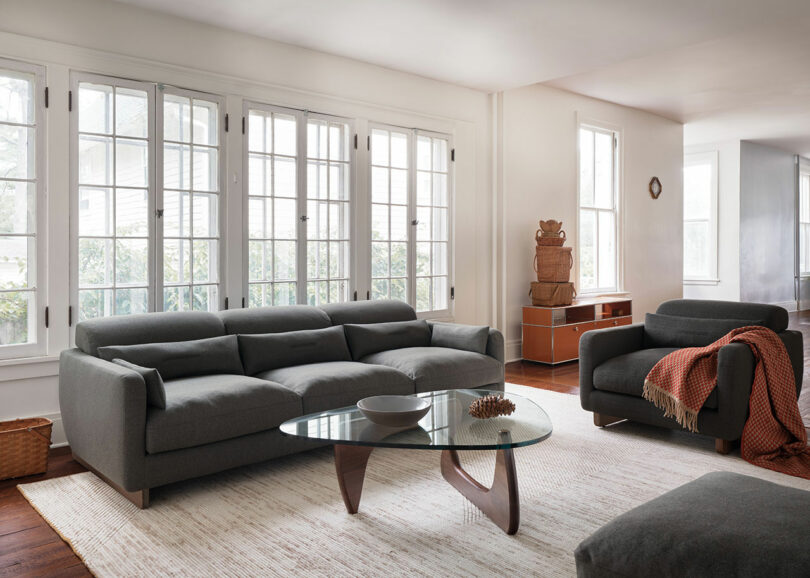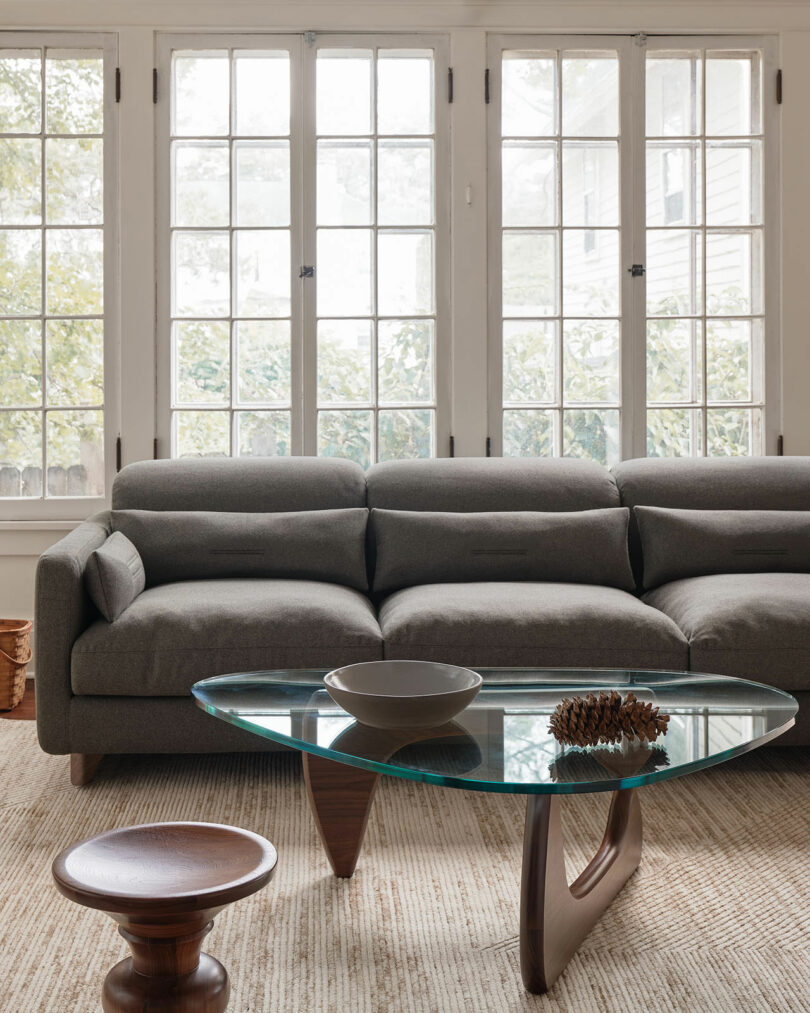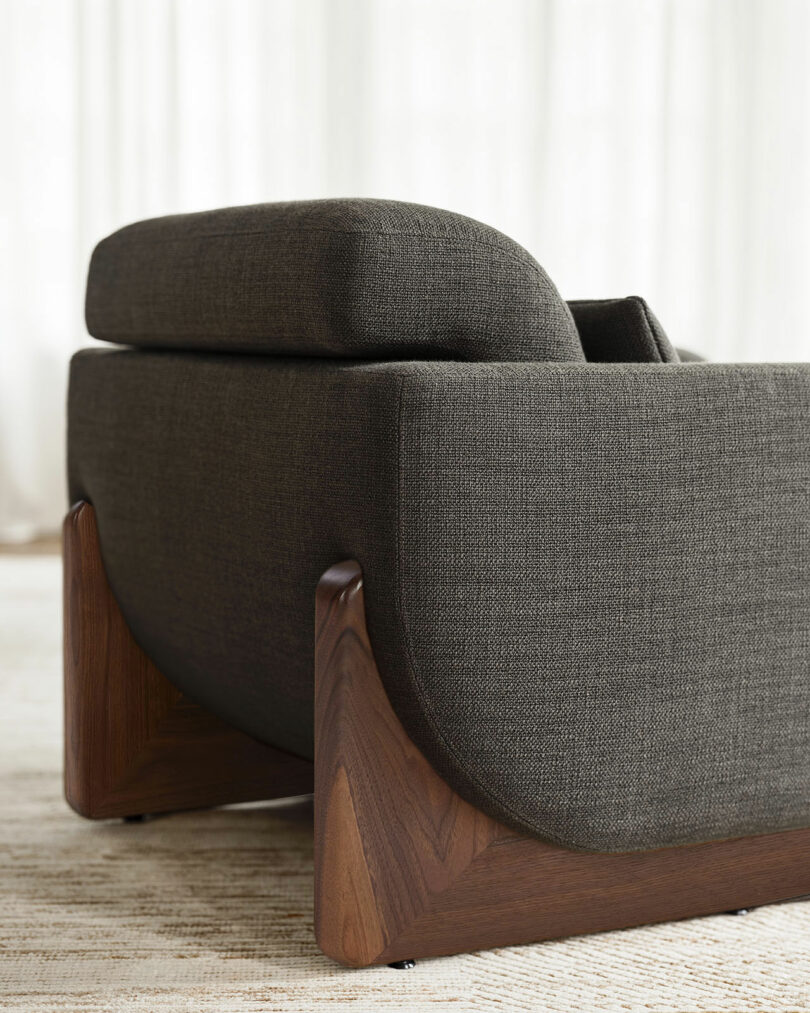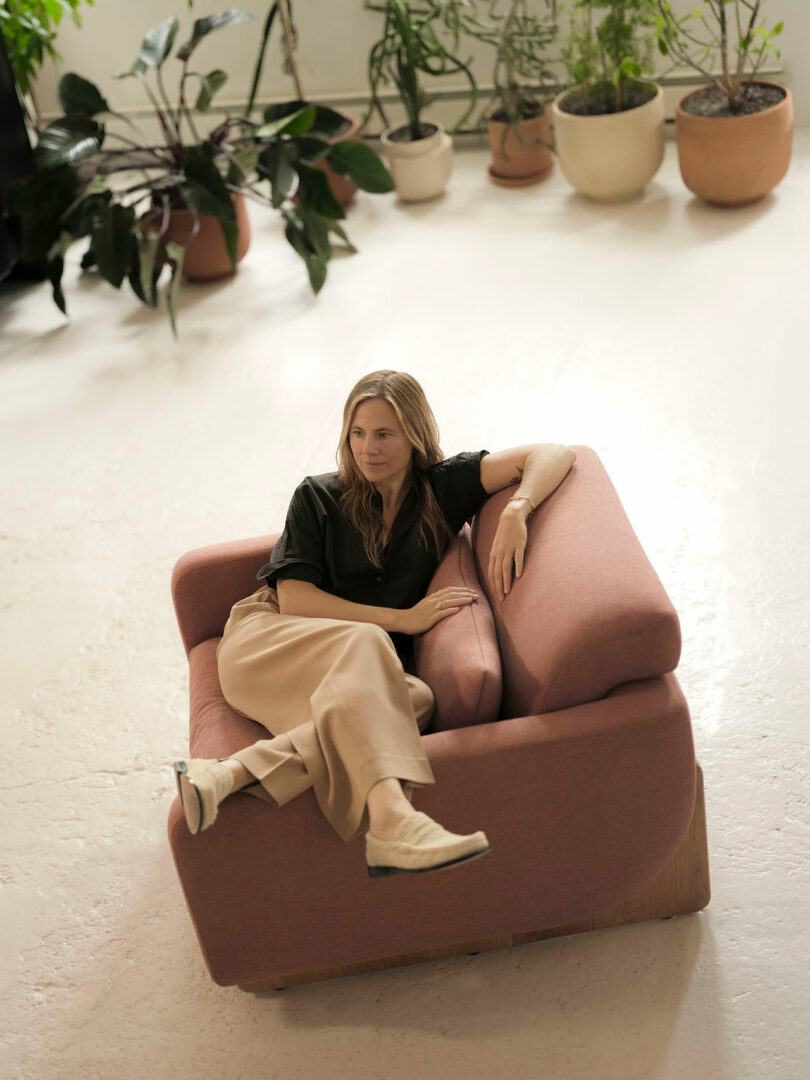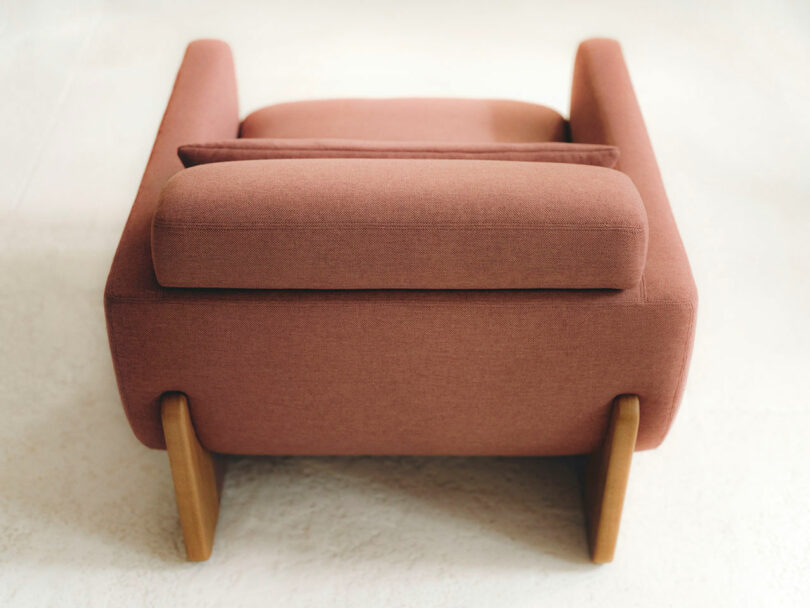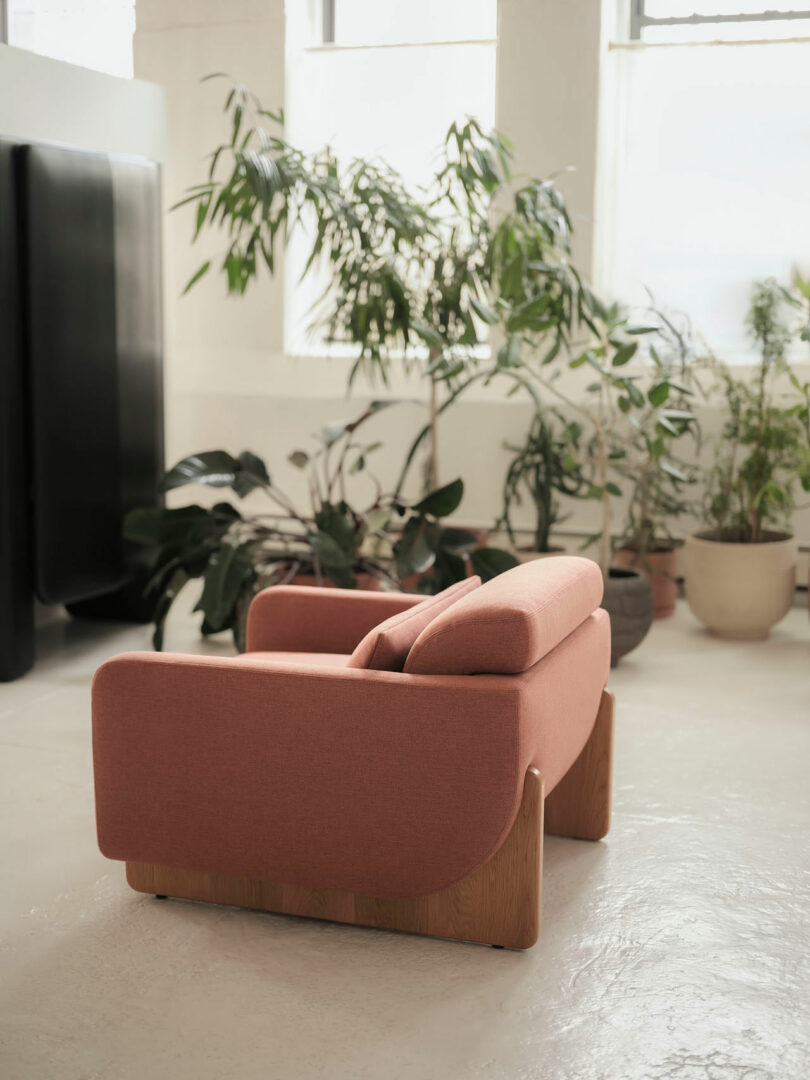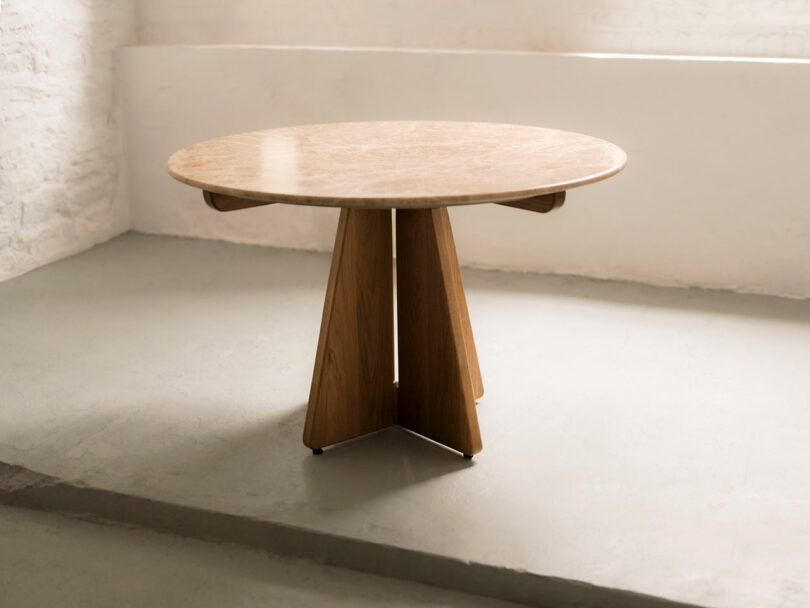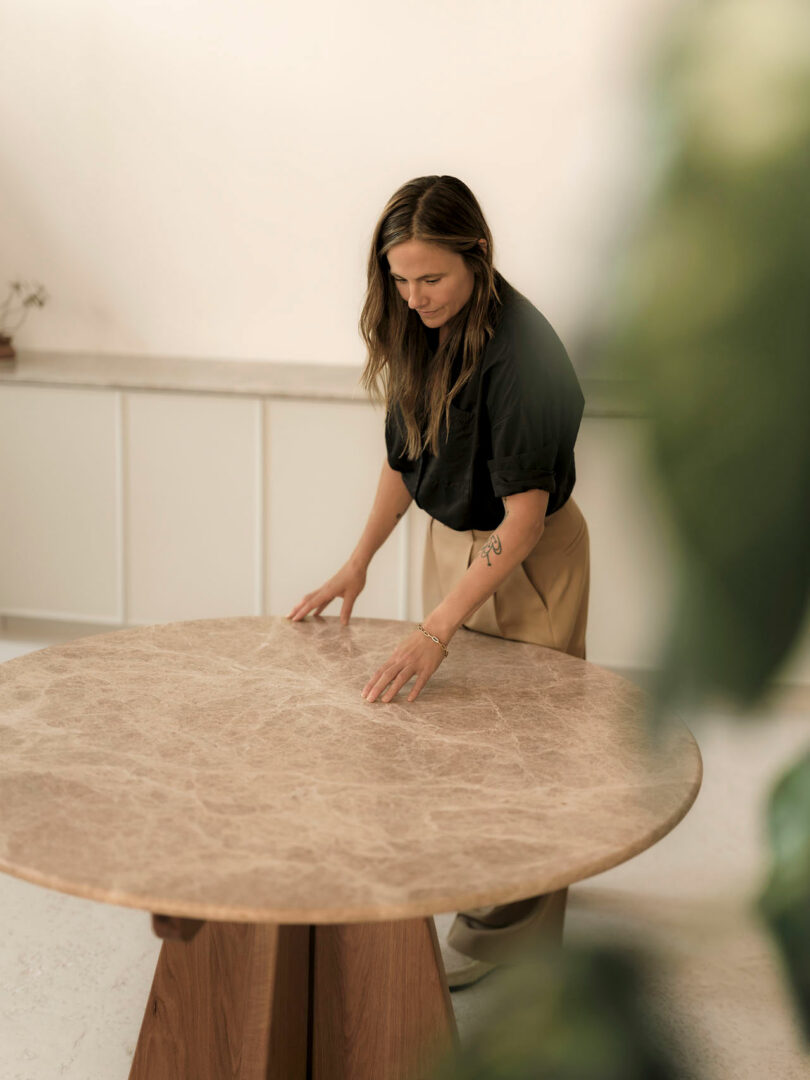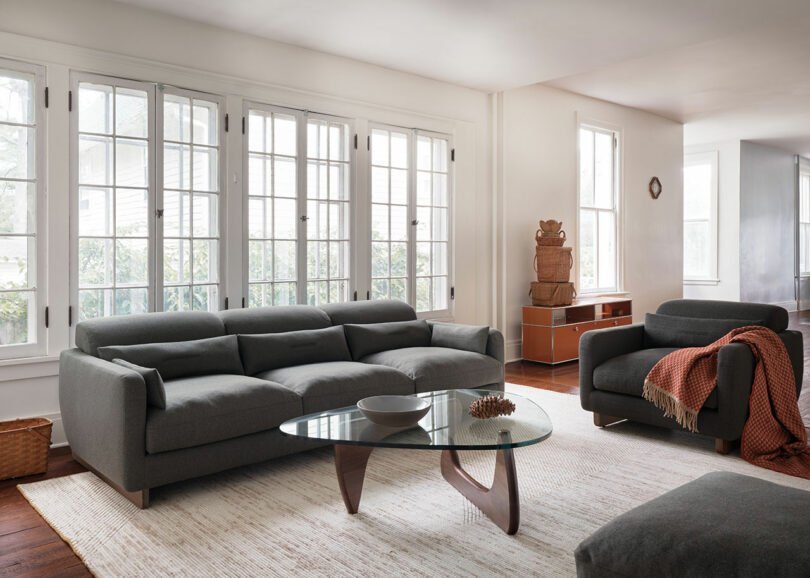
For just over a decade, Radnor has occupied a distinctive space within New York City’s ever-evolving design scene. Though having literally moved around different unconventional storefronts and expansive penthouses – launching the staged residence/gallery trend in many respects – the itinerant platform has maintained a closely curated approach: one centered on material experimentation, reinterpreted artisanal tradition, and subtle artistic expression. Tying together its diverse offering – one-off and limited edition furnishings carefully sourced from independent makers practicing around the world – is a focus on especially refined and fundamental shape.
Stemming from that continuously cultivated vision, Radnor’s founder Susan Clark has just launched two of her own collections with long-established, Miller Knoll-pillar brand Design Within Reach (DWR). The Contra Sofa and Pinna Dining Table series distill from her shrewd ability to promote a more transcendent and timeless form of contemporary design but also her own hands-on training in glassblowing, metal fabrication, textile weaving, and woodworking. Like the precision-crafted designs she’s long purveyed – and in some cases, helped produce – these substantive, surely heirloom pieces are about better facilitating everyday life, not propagating singular statements.
“Each piece is grounded in thoughtful construction and attention to detail, while also allowing room for other pieces, textures, and stories to coexist around it,” Clark says. “The human experience is the most ornate aspect of these objects.” The coherently imagined pieces aren’t bombastic in composition or rendered material. Clark has struck a careful balance, imbuing these sculptural settees and elegantly pedestaled surfaces with soft power.
Unfolding as a tightly iterated suite of sofas, lounge chairs, and ottomans, the Contra Collection is just that: a consensus of near-amorphous plushness and defined architectonic structure. “I wanted to play with juxtapositions, one being extreme comfort and then rigidity in form,” she says. “Contra – the contrapposto position—is dealing with these beautiful curves and contrasts of comfort and strength and stability. I wanted to create something that is quite monolithic – that you understand as an upholstered form, that is supposed to literally catch you; something that has a robust exterior and a soft belly.”
For Contra, silhouettes derive from the underlying framework of Nordic thatched roofs: timber beams and visible supports placed beneath insulating dried-grass surfaces. This is most evident in how the traditionally tailored, upholstered arms take on a curved contour as they wrap over sharp yet subtly beveled wood plank legs. There are nuanced references here to how less die-hard “purists,” such as Italian polymath Carlo Scarpa, interpreted modernist principles.
The Contra Collection is available in different modular configurations – armless, curved, and sectional – and a variety of fabric and leather options. It comes with either Walnut or Oak bases.
The Pinna Dining Table collection builds off of Contra. “I wanted to take the same legs and reverse the convex curve to the concave; using it as a structural ‘fern leaf’ element,” Clark explains. “Again, the idea here was to take something that is traditionally quite monolithic – heavy and dense in its iconography – and try to think about how to create a sense of lightness and airiness.”
Inherently, this exploration was inspired by natural composition. The term Pinna derives from botany as the individual leaflet of a compound leaf. The tables reflect the spinal structure of these ubiquitous formations but also negative voids that delineate around them. “The roundness of the bull nose along the table’s stone top and the curved edge of the legs are important when you’re trying to create something that is quite rigid but that feels soft,” says Clark. Rendered in either Walnut or Oak legs, The Pinna Table comes in circular and ovoidal variants. Table tops come in Carrara, Emperador, and Jura Blau marbles.
“This debut marks the beginning of an ongoing relationship with Susan Clark,” says Omar Nobil, DWR Creative Director. “It’s remarkable to see Susan’s process of intersecting art, design, and architecture within the Contra and Pinna designs – both offer simple, elegant moments with tailored details that marry strength and softness. With a sense of adaptability, we were drawn to the way in which Susan’s work is created to improve with age and use, where human interaction with honest materials like honed stone and quality wood are the most beautiful aspects of her designs.”
For more information on Susan Clark’s new Contra Collection and Pinna Dining Tables, please visit dwr.com.
Photography by Maureen Evans, courtesy of DWR.
